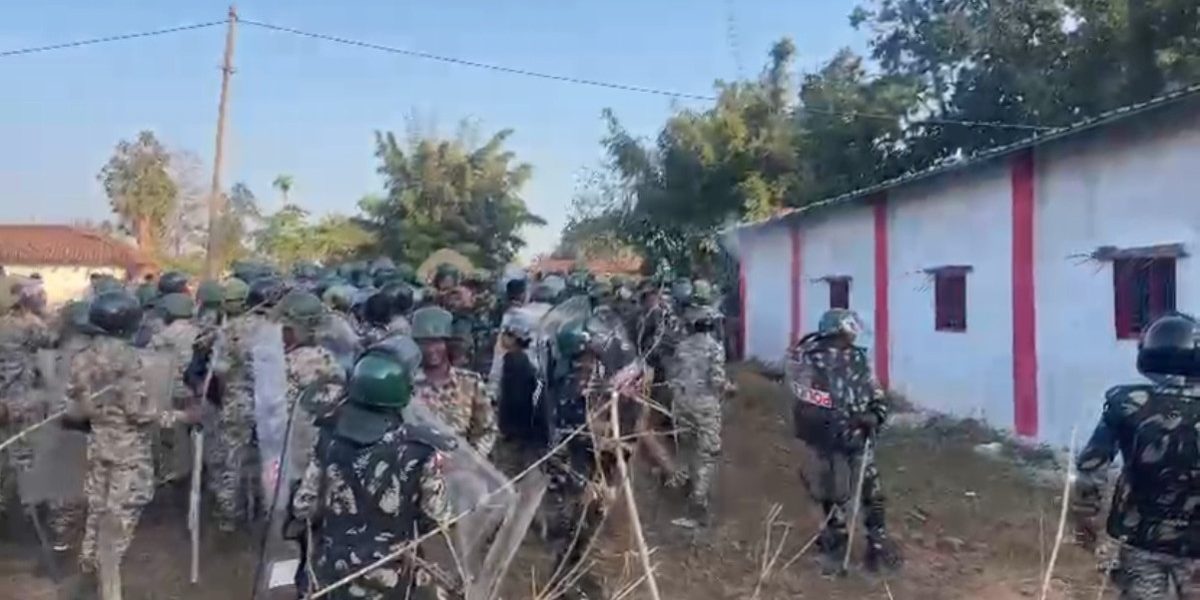Yet again the familiar periodic blame game around the National Council of Educational Research and Training (NCERT) school textbooks has broken out. It is this time centred around a number of deletions. However disparate, prima facie, might appear the issues with which the deletions are related, the same ideological impulse lies behind all of them. Much though I would have loved to focus on all the deletions and their interconnectedness, I wish at the moment to concentrate only on those that relate to Gandhi’s assassination.
Let us recall that fateful event of January 30, 1948. Moving beyond the literal fact of Gandhi’s assassination by an individual named Nathuram Godse, it will help to see the event as part of a historical conjuncture. Never during the 30-odd years of his association with the Indian freedom struggle had Gandhi felt as powerless and neglected as he did during roughly the last two of those years. This realisation was at its acutest during his last five and a half months, the months that span his entire life in independent India. He was at odds with the people and the rulers of free India, both of whom were feeling increasingly exasperated by him. To a leadership and people hell-bent on hurtling along the high road of modernisation, he was offering the ideal of village self-sufficiency. In the midst of communal insanity, he was determined to ensure peace, love and friendship.
Believing it was time for him ‘to do or die,’ he, indeed, put his life at stake twice within that brief period. ‘Can a man,’ Gandhi – using the common noun in a gender-neutral sense – asked his friend C.F. Andrews in despair, ‘do more than give his life?’ Given our experience of quotidian suicide bombing, Gandhi’s question may sound meaningless today. But in his day there was poignancy about it. Still, when he spoke to his people about his fast, he took care to explain as he pleaded with them: ‘No man, if he is pure, has anything more precious to give than his life. I hope and pray that I have that purity in me to justify that step.’
Their exasperation aggravated by resentment against his fast, people – Hindus and Sikhs – asked him if he was not fasting to save the Muslims of Hindustan. Yes, he answered honestly, and added that he was also fasting to save the Muslims and Sikhs of Pakistan. The last straw for the people came with the release, as a result of Gandhi’s fast, of the Rs 55 crore that was due to Pakistan. Generations of Indians – Hindus – have held this against Gandhi. Their number keeps increasing.
But no matter how exasperated and resentful they felt, Gandhi was still Gandhi. They could not let him die. They, in Delhi, let peace return to the city, creating conditions for the old man to break his fast. Elsewhere the ugliness continued.
The lunatic fringe that saw Gandhi as Hindus’ enemy number one was by then determined to get him out of the way. Gandhi, for his part, turned himself into a sitting duck for them. Fearless till his last breath, believing that his life and death lay in God’s hands, and assured that his end would not come with the dissolution of his physical body, he met the death he had started praying for during those last sad days. Receiving bullets with Ramanaam on his lips.
Godse failed to finish Gandhi off. Ironically, he opened the floodgates for people’s adoration for Gandhi which had for a while lain buried under their resentment against him.
In the intervening seven decades, however, people in general have returned to their old way of harbouring, in varying proportions and varying degrees of self-awareness, opposite feelings towards Gandhi. As Jayant Mahapatra memorably put it – and I quote him from memory:
We love him, we hate him,
We do not know it.
No one in India knows this better than those who see in Gandhi the most formidable obstacle to the realisation of a Hindu rashtra. They know it better than others because they have known it at great cost. They had to run for cover, to spin webs of lies, rush underground, and grovel to obtain pardon. From the moment the deed was done, Gandhi’s assassination has been a bone in their throats that they can neither eject nor swallow. Killing Gandhi – finishing him off – is pivotal to their ultimate triumph. But killing him, they have realised, cannot be a one-shot affair. Not even now when, from being a lunatic fringe at the time of the assassination, they have come to acquire control of the state power. His killing, they know, cannot but be a long-drawn-out exercise requiring elaborate planning and enormous patience. Their latest tampering with the NCERT school textbooks is part of that exercise. And it is but one of the many manoeuvres being simultaneously carried out to kill him.
The deletions from the chapters dealing with Gandhi’s assassination show how shrewdly the operation has been planned. The portions deleted from the class 12 Political Science textbook are:
“He was particularly disliked by those who wanted Hindus to take revenge or who wanted India to become a country for the Hindus, just as Pakistan was for the Muslims….”
And:
“His steadfast pursuit of Hindu-Muslim unity provoked Hindu extremists so much that they made several attempts to assassinate Gandhiji.”
Also:
“Gandhiji’s death had an almost magical effect on the communal situation in the country…. The Government of India cracked down on organisations that were spreading communal hatred. Organisations like the Rashtriya Swayamsevak Sangh were banned for some time….”
The portions deleted from the history textbook for the same class relate to the description of Godse as ‘a Brahmin from Pune’ who was ‘the editor of an extremist Hindu newspaper’ and ‘had denounced Gandhi as ‘an appeaser of Muslims.’…
This story was originally published in thewire.in. Read the full story here





